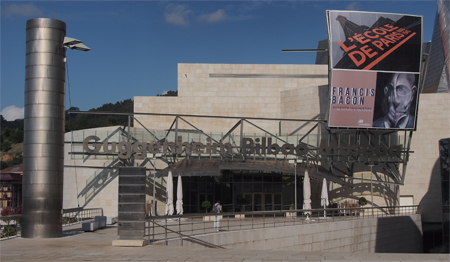
Guggenheim Museum |

Guggenheim Museum Floor Plan
|

Guggenheim Museum
|
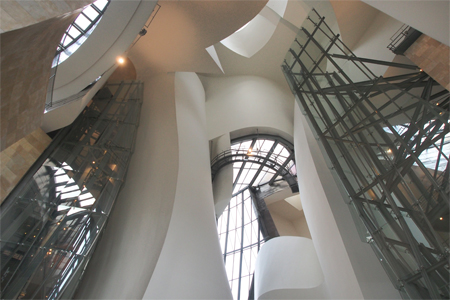
Guggenheim Museum |

Guggenheim Museum |
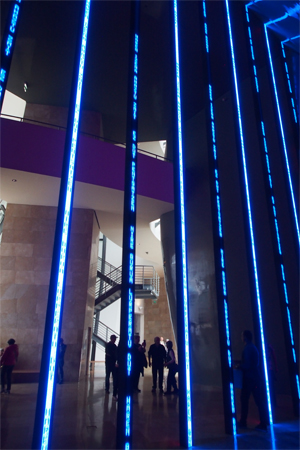
Guggenheim Museum
Jenny Holzer - Truisms
|
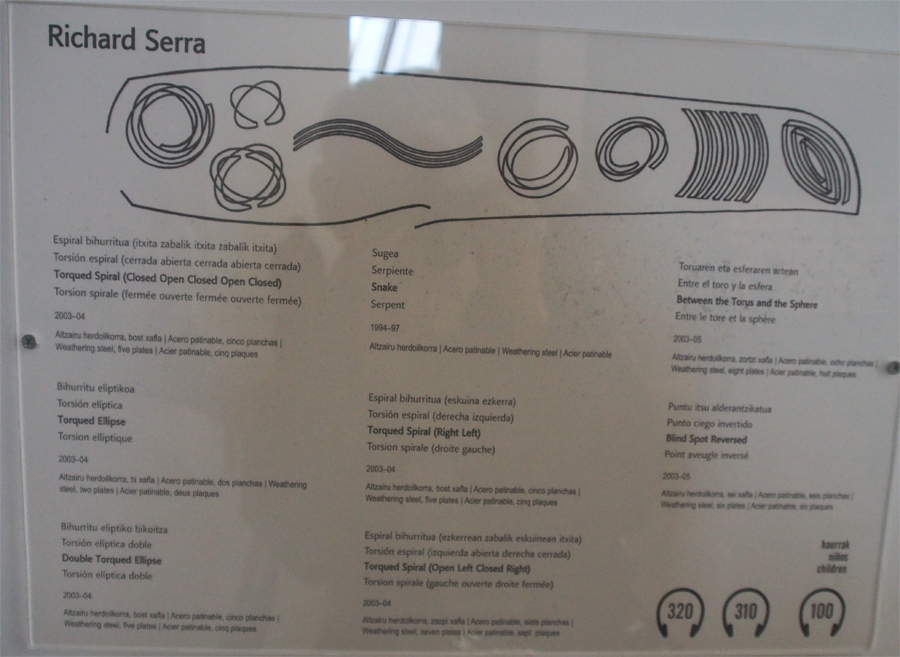
Guggenheim Museum
Richard Serra - The Matter of Time
|

Guggenheim Museum
Richard Serra - The Matter of Time
|

Guggenheim Museum
Richard Serra - The Matter of Time |

Guggenheim Museum
Richard Serra - The Matter of Time
|
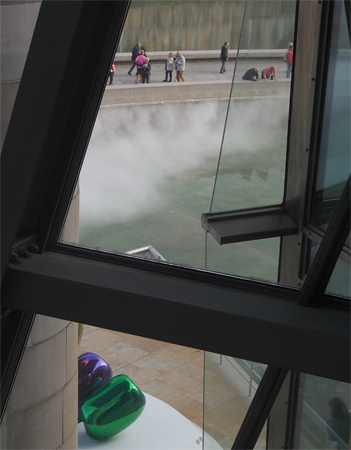
Guggenheim Museum
Every 20 minutes “Fog” is expelled outside to float “in ever changing forms” over the pool of water.
|

Guggenheim Museum
|
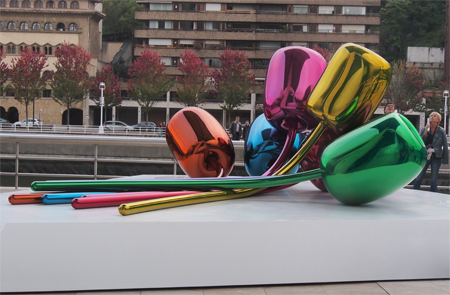
Guggenheim Museum - Koons' Tulips |
On the second floor (no photos of the art work, just the building) we went into a round room and a square room with oil paintings hung on the walls. The round room had portrait paintings that “changed” from realism to abstract art. The square room had an Andy Warhol painting of faces of Marilyn Monroe and a graffiti painting by Babquait. There was an exhibition of the “School of Paris” art and one centered around Frances Bacon. On the third floor was art by two current Basque sculptors – how did the “empty spaces” in the sculpted forms impress the viewer?
I am glad our guide spent two hours helping us understand the intent of the exhibits and to admire the odd interior.
Next, our bus took us to “old town” Bilbao and we walked around. The Opera House was rebuilt after a fire in the 1800’s. The ground floor was all markets with the opera theater built above them. This helped pay for the building. The “French” beret is a Basque invention. Basque men wore them flat, not roguishly tipped to the side.
|

St. Nicholas Church |
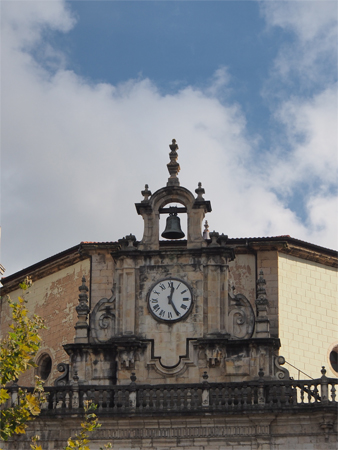
St. Nicholas Church
|

Street scenes |

Street scenes
|

The beret - a Basque invention
|

Plaza Nueva - New Plaza |
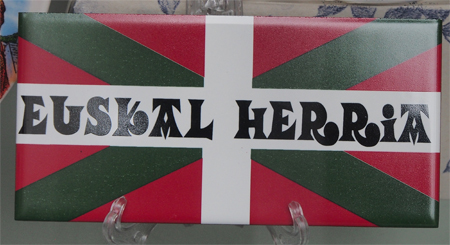
Basque country |
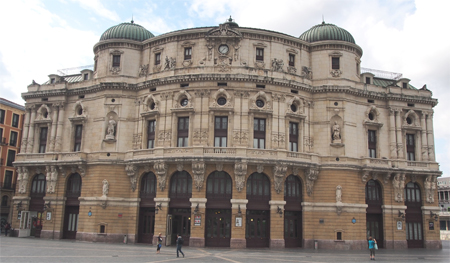
Teatro Arriaga - the opera house
|
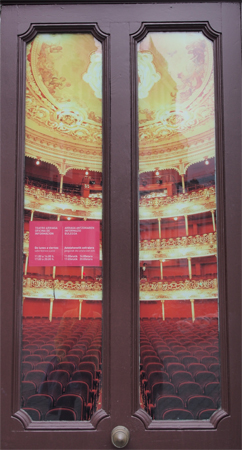
Teatro Arriaga - the opera house- photo of a poster
|

Santander Train Station |
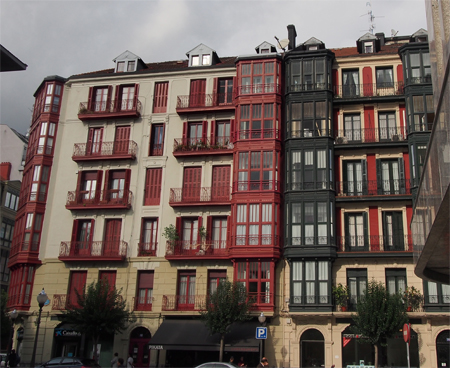
Street scenes
|
After a quick lunch in our room a group of us went with Judith on an interesting “learning and discovery” event to the neighboring seaside towns of Getxo and Portugale. We walked to a bus stop, rode a city bus to Getxo, crossed the river on the gondola of the famous “Hanging Bridge” (the Vizcaya Bridge).
The Vizcaya Bridge was the 1893 solution to a road across the river that allowed ships with tall masts to pass underneath. The suspended gondola holds six passenger cars in the middle with passengers on either side. It crosses like a zip line high over the water. The supports are like the Eifel Tower structure.
|
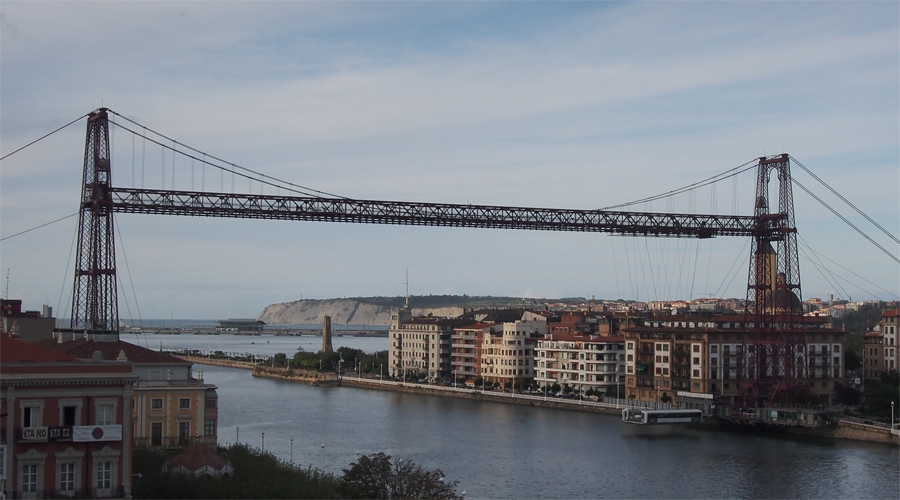
Vizcaya Bridge
|

Vizcaya Bridge |
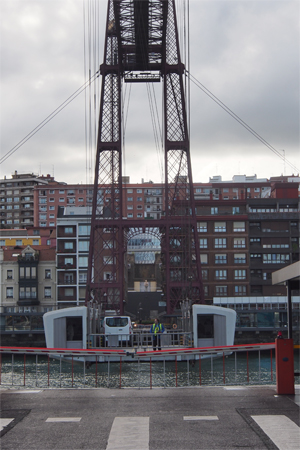
Vizcaya Bridge - "Gondola"
|

Vizcaya Bridge - "Gondola" |

Vizcaya Bridge - "Gondola"
|
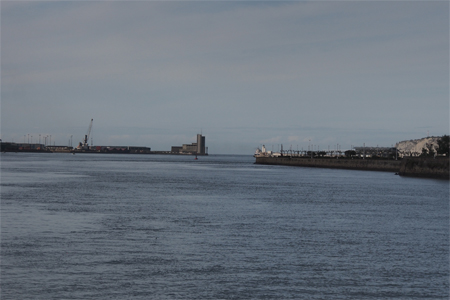
Harbor opening from the gondola
|
The town has a very welcome moving ramp up to the top of the town (the town is very hilly) where we strolled around, looked at the Basilica of Santa Maria and the Torre Salazar, took in the view to the ocean, and then walked down the steep ramps and stairs back to the riverside to meet Judith at a hotel to enjoy a glass of patxaran, a sloe berry liquor.
|
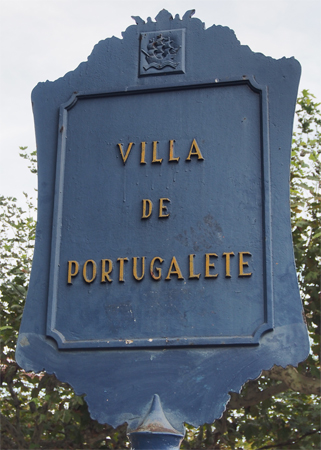
|
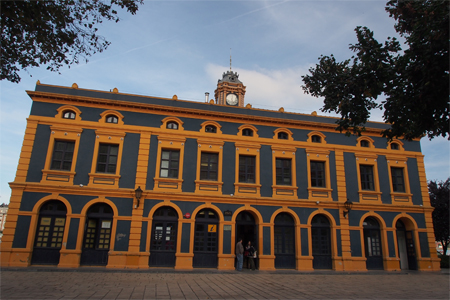
Tourist Office |
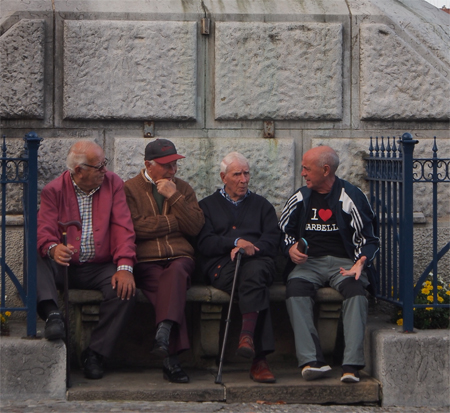
Group of old men in front of the Victor de Chavarri Monument to Metallurgy |
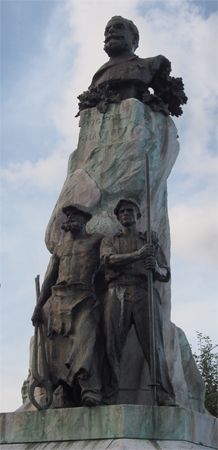
Victor de Chavarri Monument to Metallurgy
|
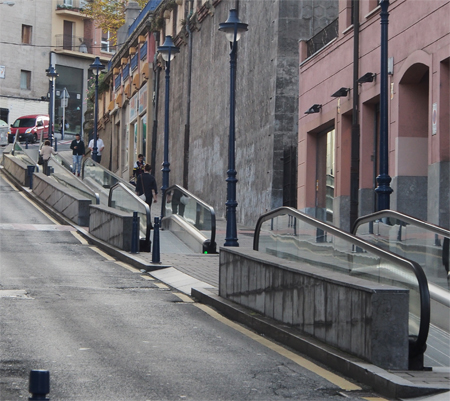
Moving ramp to the upper town |
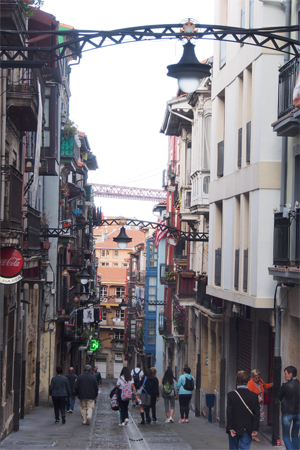
Street scene
|
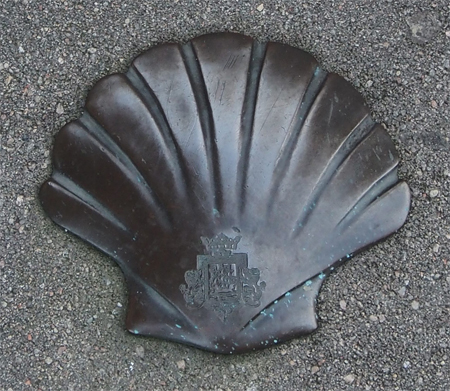
Symbol for the Way of St. James |

Basilica de Santa Maria
|
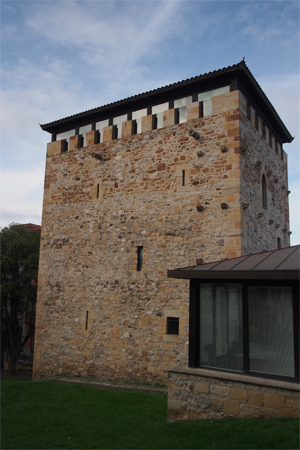
Tower Salazar
|
To return home we took a ferryboat back across the river, walked to the Metro, and took the underground route back to Bilbao. Lots of different modes of transportation today!
Dinner tonight was included. We ate six different pintxos and fruit for dessert. Vegetables are a rarity!
|
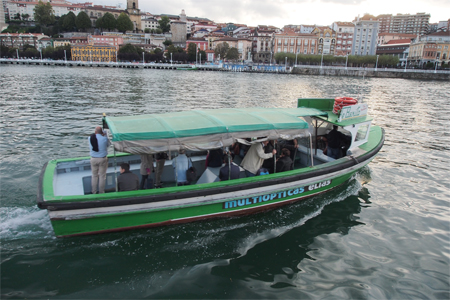
Ferry across the Estuary of Bilbao |
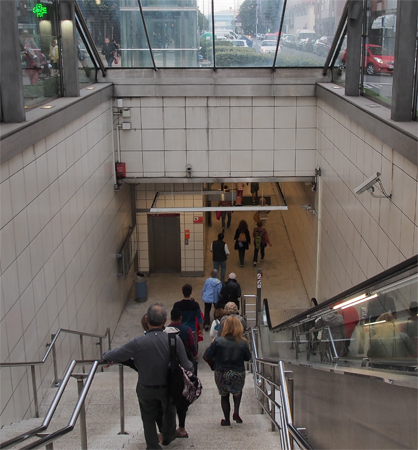
Subway back to town
|
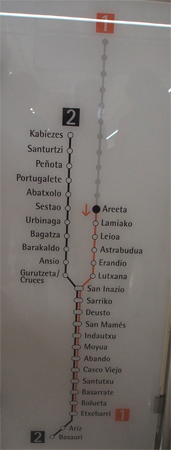
Subway map
|

Subway |

Dinner - Pintxos
|
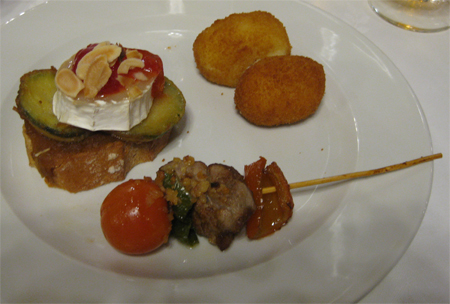
Dinner - Pintxos |












































